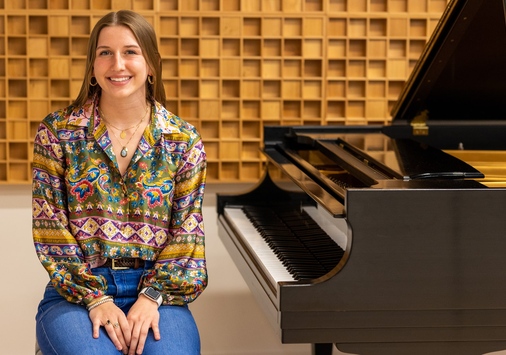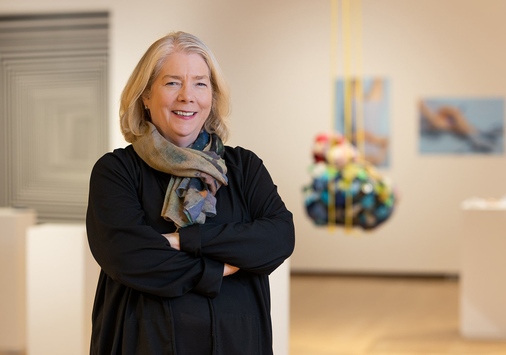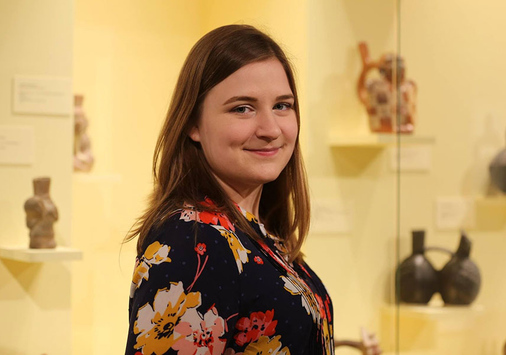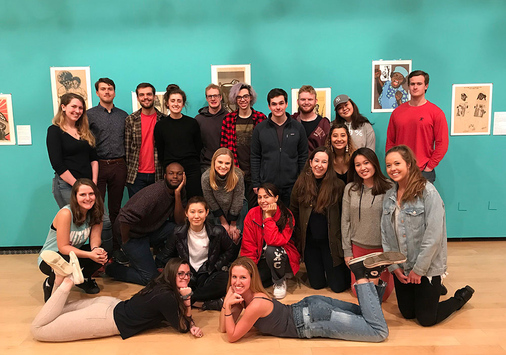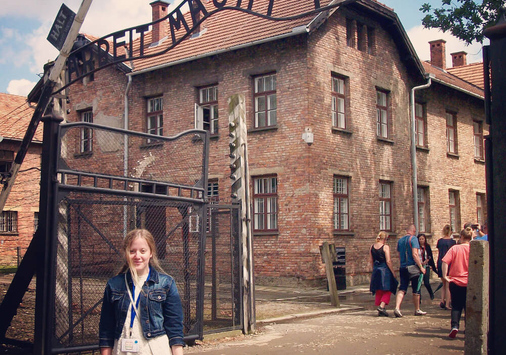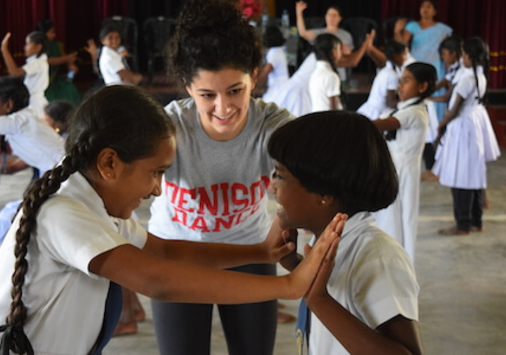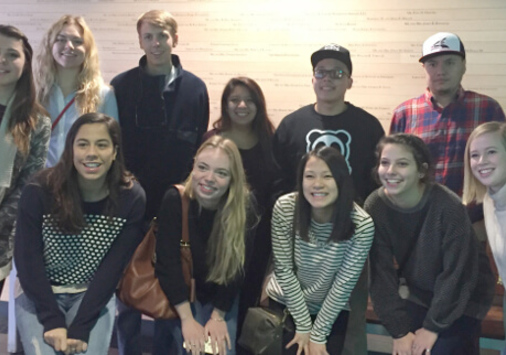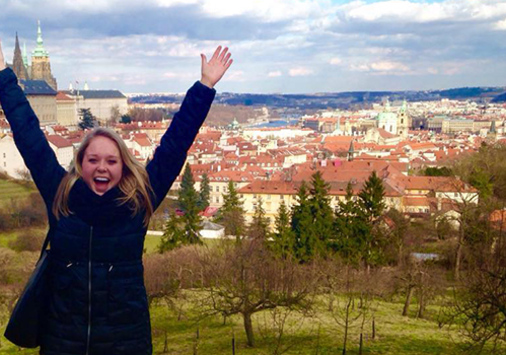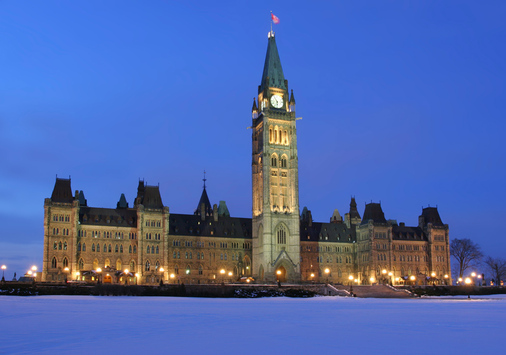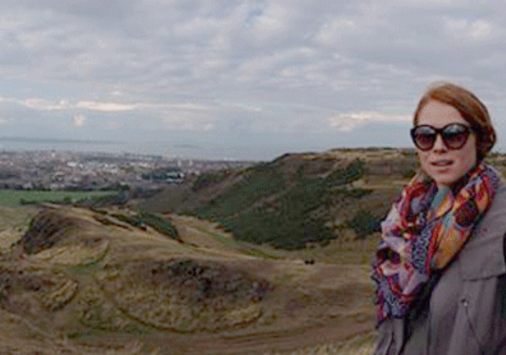Courses
2024 - 2025
For this academic year's course catalog, please visit our Academic Catalog site. For courses currently offered, please refer to the Schedule of Classes.
Senior Symposium in Art History and Visual Culture.
This course is an introduction to selected themes, periods, and sites of visual production and built practice in Europe, the Mediterranean, and the New World. It focuses on a selected series of 'case studies' that integrate sites/monuments significant to the flow of Western art with period-specific and general critical issues. The relation of systems of visual and architectural representation to period-specific and current understandings of power, ritual, colonialism, transculturation, and the human body, as suggested through the disciplines of Art History and Visual Culture, will be key. Medieval and early modern developments will be emphasized.
An introduction to the art and visual culture of India, China, Japan and Southeast Asia focusing on historical, religious and social issues and the function of both art and visual culture.
Crosslisting: EAST 131.
This introductory course examines the diverse arts and visual culture of Latin American countries, from Colonial times through the present, via a social art historical perspective. As we move through the history of Latin American art, we will center underrepresented narratives to explore key issues such as history making, uneven development, nation building, decolonization, and transnationalism. Students in the course will learn about the social, political, and historical contexts of Latin American art and become familiar with key theoretical concepts regarding representation and aesthetic practice. Objects and practices of study will include codices, casta paintings, printmaking, muralism, public art, and performance. This course will be broken into four thematic unit sections: (1) Indigenous Ideologies, European Conquest, and Contested Visions; (2) Struggles for Independence and Redefining National Art; (3) Revolutions and Avant-Garde Art; and (4) Contemporary Social Movements and Socially Engaged Art.
A general category used only in the evaluation of transfer credit.
This course is an introduction to the art and architecture of Greece and Rome. Visual and spatial practices of religion and politics will be examined, focusing on Classical Athens and on Rome during the Late Republic and Early Empire. Selected works of art and architecture, and specific urban and exurban sites will be considered. Issues surrounding 'classical' forms and their subsequent role in Western art and architecture will be investigated.
This course is an introduction to the visual culture, architecture, and selected patterns of urban development in Italy during the Early Renaissance and the Quattrocento. Focus will be on developments in Siena, Rome, and especially Florence. Issues surrounding 'classicism' and the development of new representational systems, new scales and materials in sculpture, new spatial and structural forms in architecture, and new relations to urbanism and centers of power and global expansion will be explored. Of particular interest are dynamics of difference and identity such as political pressures after the Black Death, patriarchy in family and church, women's resistance, and European slavery before 1492.
This course provides an introduction to the visual culture, architecture, and selected patterns of urban development Rome during the High Renaissance, Mannerism, and the Baroque era through the papacy of Alexander VII (1655-67). Developments from ca. 1450 on in Rome leading to Julius II and the Roman High Renaissance will be a focus. Consideration of Mannerism, the Council of Trent and early Baroque visual and architectural forms (later 16th century) will lead to a second focus on 17th century visual and spatial practices in Counter-Reformation Rome. A third focus will be Iberian and Italian colonial practices, transculturation, and the hegemony of Counter-Reformation visual culture and urbanism under the Habsburgs and beyond.
Special topic courses with a focus on particular aspects of Art History and Visual Culture.
The course will analyze artworks by Latina and Latin American women artists that address power inequalities within the intersections of class, gender, and race. There will be a focus on the often-overlooked role of Latina and Latin American women artists in political, social, and cultural movements. Students will be expected to think critically about feminist theories, particularly intersectional feminism, while visually and socially analyzing various works of art made by Latina and Latin American women in both Latin America and the U.S.
This course critically analyzes the history of Western museums and their impacts on contemporary museum practices in the U.S. via a decolonial lens. Our goal is to examine the impact of the history and legacy of colonization on museums, so we can delink museum practices from Western hierarchies and systems of power. Throughout the course, students will interrogate the purpose of early versions of exhibition spaces, why museums were created, and how knowledge was produced. They will interpret museum architecture and how this may impact a museum’s identity and ideas of inclusivity and exclusivity. They will examine how objects were collected to be part of museums' collections, who was impacted by these practices, and how collection practices have evolved or come to terms with difficult histories. They will analyze the layout of different types of museums and learn how exhibitions are put together while analyzing issues of hierarchy, representation, and biases. We will especially examine collections and exhibitions that attempt to center underrepresented communities in the U.S., including black, indigenous, and people of color.
This course examines the transnational history and exchanges of modern and contemporary Mexican and Mexican-American artists in the United States. Students will be introduced to critical events that have shaped the history and culture of Greater Mexico (such as the Mexican-American War and the Treaty of Guadalupe Hidalgo of 1848) before delving into the relationship between art and social movements, focusing on the post- revolutionary moment in Mexico (1910-1940) and the Chicano Civil Rights Movement (El Movimiento) in the United States (1960s-1990s). The class engages students in an in-depth analysis of works of art in diverse media and relates these to the social and historical conditions of their production. It challenges canonical accounts of Mexican modernism by broadening the traditional field of inquiry to consider mediums and artists traditionally regarded as “minor” and by offering a transnational approach to the art of Mexican-Americans in the United States.
Special topic courses with a focus on particular aspects of Art History and Visual Culture.
An introduction to Japanese architecture, sculpture, painting and the decorative arts from prehistoric times to the 20th century, with an emphasis on the works in their cultural and religious context.
This course is an introduction to Chinese visual culture from prehistoric times through the Mao era. Organized around a selection of key objects and images, this course explores a variety of art forms from China through diverse contexts such as ritual, gender, imperial patronage, literati ideals, and political icons.
Crosslisting: EAST 232.
Special topics in Art History and Visual Culture.
This course engages the question: ‘How are images used to imagine our place in the world?’ Students are invited to study fascinating practices of spatial image-making in East Asia from the inside out, by exploring these world-views from the perspective of their makers. You will be asked to pay special attention to how social and economic power structures inflect these representations: to envision and decode spatial imagery as a site of imagination, control and resistance. Artists and patrons in China, Japan, and Korea have for centuries produced elaborate maps and landscape imagery, photographs and film to imagine the world in a variety of ways. This course invites you to approach modern and contemporary representations of space in East Asia both in theoretically and historically informed ways. In the first part of the course, students build a frame of reference for their analysis of post-war case studies, by reading core texts in spatial theory, and exploring important visual representations of space from pre-modern East Asia. In the second part of the course, students apply these theoretical and historical approaches to select cases that exemplify more recent struggles over space and its imagination in East Asia.
This course is an advanced investigation of art and architectural developments in the Latin West during the medieval period and into the early modern period. Selective foci include western monastic art, building, and lay patronage in Spain, France, and Italy during the Romanesque through Gothic periods and beyond. The early urbanism of the communes of Italy are a focus, with their expansion of civil art and architecture through the fourteenth century, and rise of new religious orders.
The course analyzes the creation, history, and continual legacy of radical printmaking via transnational and multiracial social movements. Therefore, the course takes a global art historical approach to the materials, analyzing the influence of transnational art and political networks. The course is influenced by postcolonial theory, transnationalism, and critical race theory. Through visual, textual, and social analysis via close readings, critical discussions, and a comprehensive research project, students will find connections, networks, and contact zones between distinct graphic art movements. Throughout the course, we will explore specific networks created among Mexican, Black, and Chicanx printmakers, but students will be encouraged to find similar transnational and multiracial solidarity movements among other printmakers.
This course explores how art has engaged social transformation in China. You will be guided to take an inside look at how the notion of revolution stands front and center in art making during China’s long 20th century. We think deeply about two interrelated questions: how can art have social and critical agency, and how has it been related to social change in China? We approach these questions historically to become sensitive to the different contexts and experiences of the artists we study but also to how their struggles and creative interventions connect across time. In the process, you will build a framework of reference for understanding social and creative life in 20th century China, and its enduring connections to the global world.
Crosslisting: EAST 333.
For the student of marked creative ability who wishes to pursue advanced subjects not otherwise listed, such as design, drawing, graphics, ceramics or history and criticism.
For the student of marked creative ability who wishes to pursue advanced subjects not otherwise listed, such as design, drawing, graphics, ceramics or history and criticism,
This class is required for Art History and Visual Culture majors. This class is the first of the three-part capstone experience for the Art History and Visual Culture major. It introduces students to the theoretical and methodological platforms of Art History and Visual Culture and examines the historical development of the fields of both Art History and Visual Culture. It introduces students to the methods and theoretical approaches of practicing scholars in the field and asks students to formulate their own platforms, which they will translate into active research in the second and third capstone courses (AHVC 408 and AHVC 409).
A general category used only in the evaluation of transfer credit.
In this required course, senior majors will research and prepare the senior thesis.
In this required course, senior majors will present their senior thesis during our annual senior symposium.

